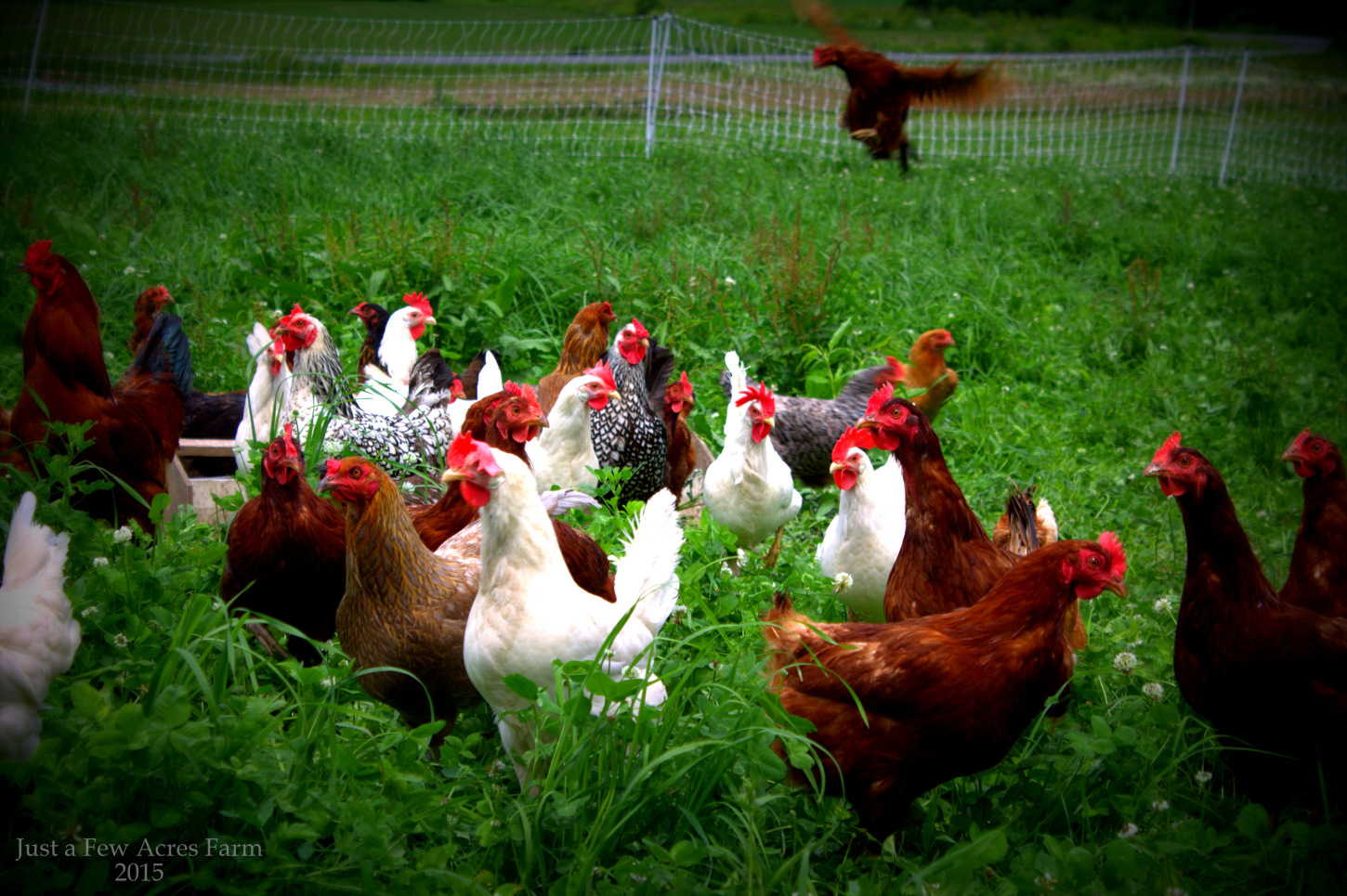Just a Few Acres Farm

Contact
- Peter Larson
Quick Facts
Where to Buy
Products
Breeds + Varieties
About the Farm
Background
Located in the Finger Lakes region of central New York, near Ithaca, this seventh-generation family farm has been in operation since it was deeded as a Revolutionary War plot. The farm was revitalized in 1996 by Peter and Hilarie Larson, who moved back to the land after college and careers in Syracuse. They spent a decade renovating the old family home and building new outbuildings, eventually taking back the leased land and starting farming operations in 2013. The farm maintains a do-it-yourself ethic of self-reliance, repairing their own equipment, building infrastructure, and generating their own electricity.
Practices
The farm employs a variety of innovative and traditional farming methods to maximize the health of the land and livestock. They pasture-raise Cornish Cross broiler chickens, laying hens of ten different breeds, broad-breasted white turkeys, purebred Old Spot pigs, and 100% grass-fed Dexter cattle. Portable infrastructure allows them to move livestock to fresh pastures, ensuring optimal nutrition and land use. They use locally grown and milled grain for feed and focus on humane treatment, emphasizing sunshine, fresh air, and green grass. The farm's eight guiding ethics include family labor, no long-term debt, use of fully depreciated machinery, adaptable infrastructure, careful expense management, novel land use, increasing land and community health, and direct consumer relationships.
The Rest
The farm sells its products directly to consumers at the Ithaca Farmers Market and from the farm itself. They pride themselves on a creative business model that supports a family of five on 45 acres by combining traditional farming values with progressive ideas. Their approach allows each type of animal to benefit uniquely from the land, whether it's poultry foraging for bugs, pigs thriving in forest edge environments, or cattle accessing new pastures daily. This multipurpose use of fields and innovative pasturing methods help maintain the health of both the land and the livestock.